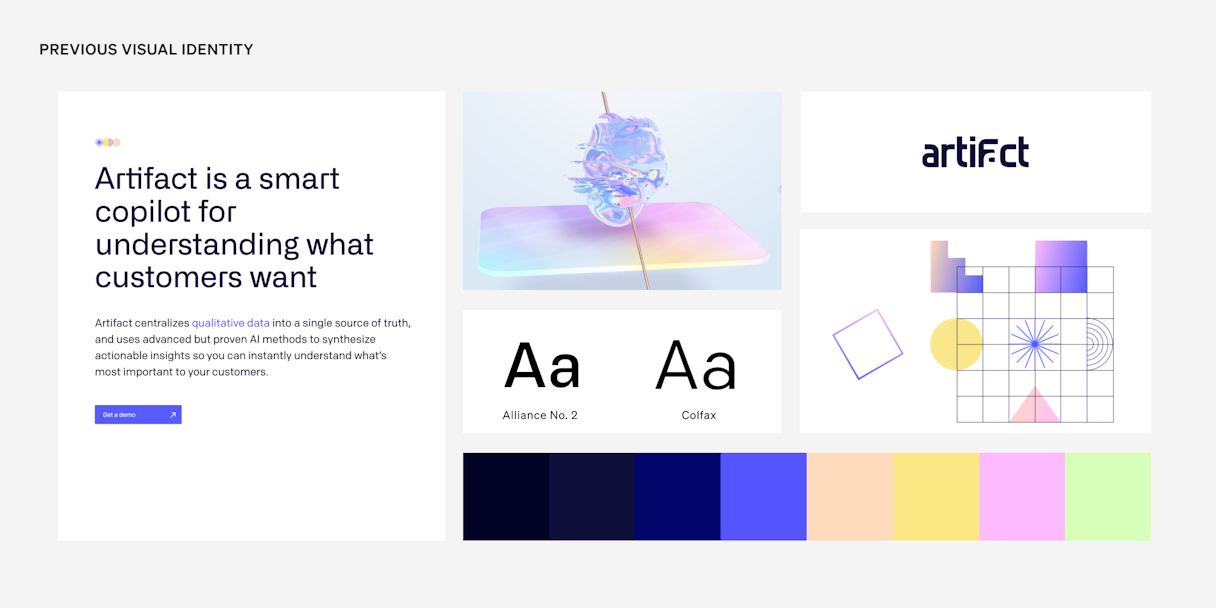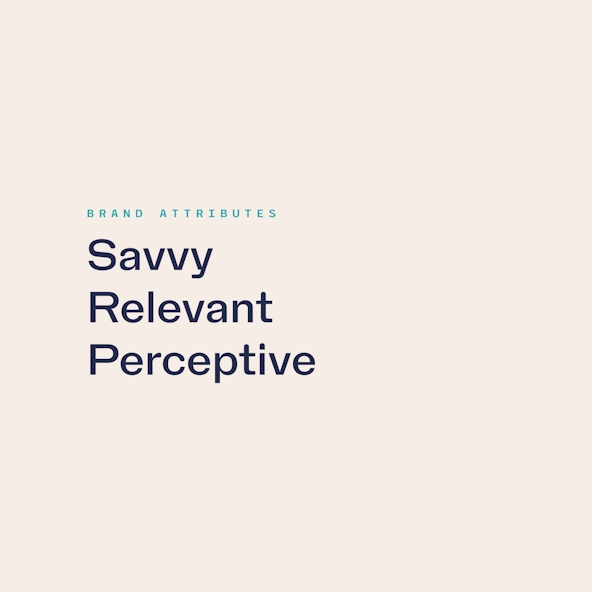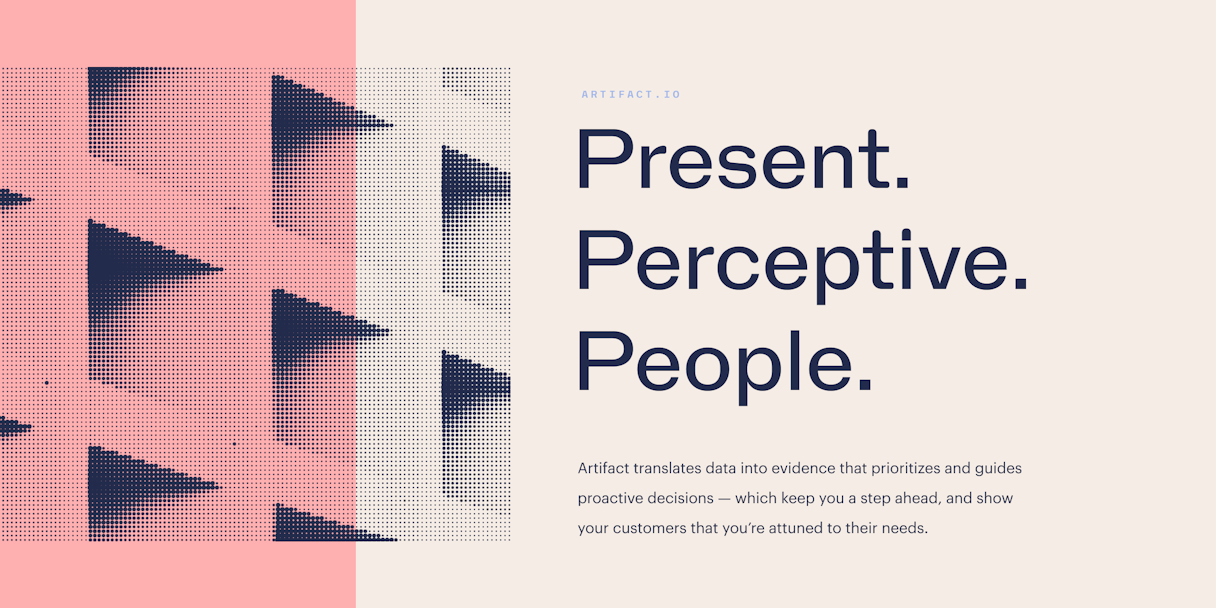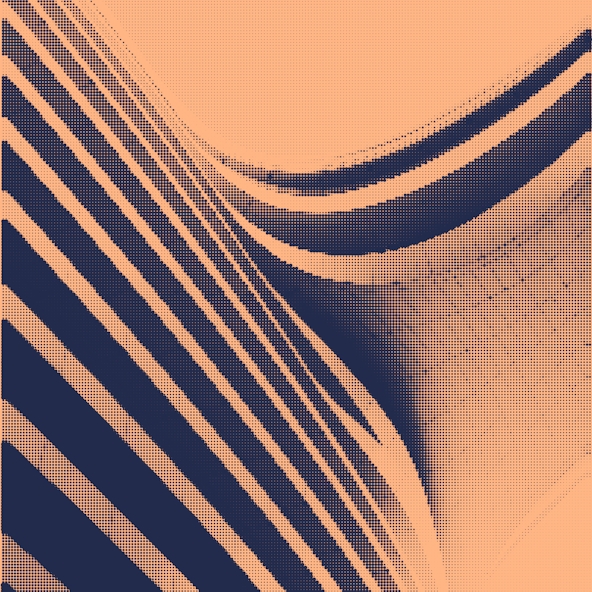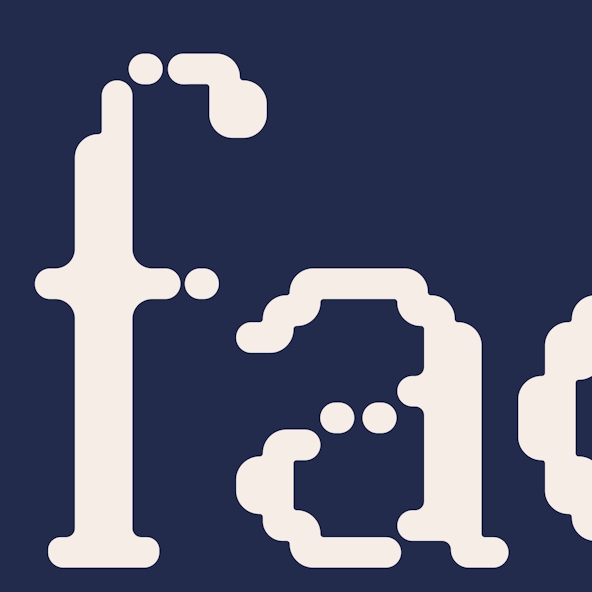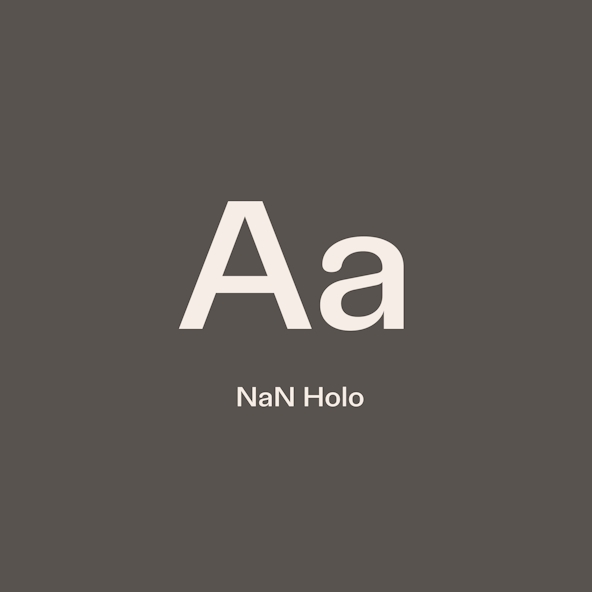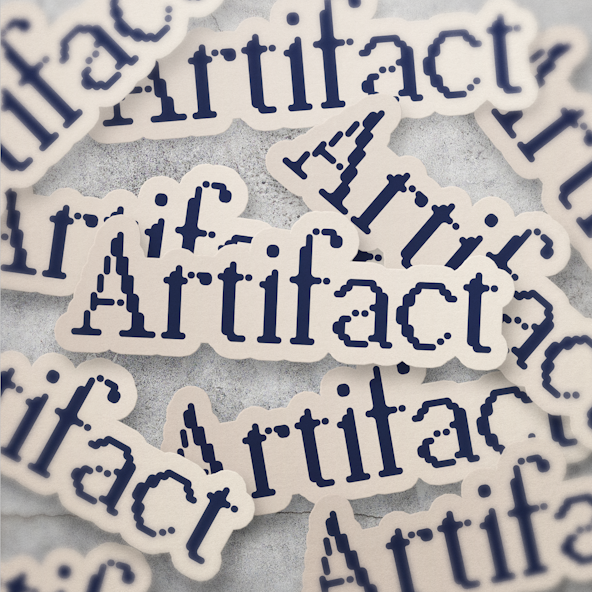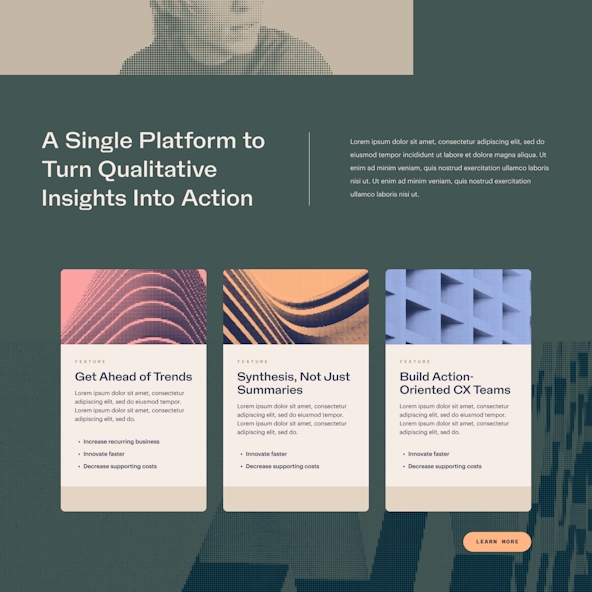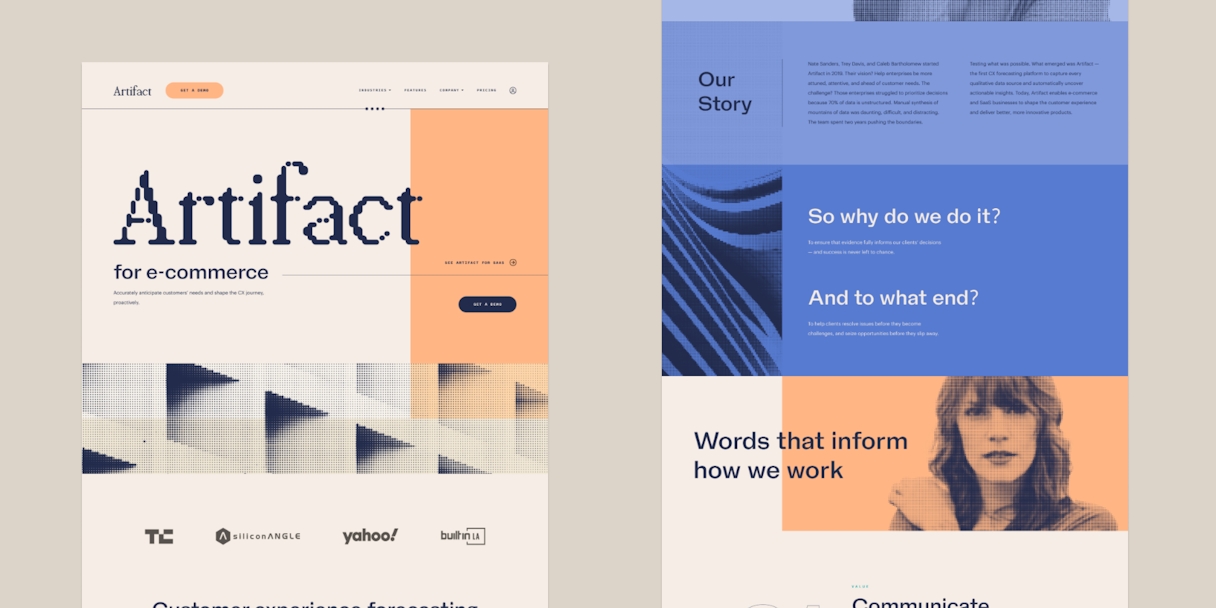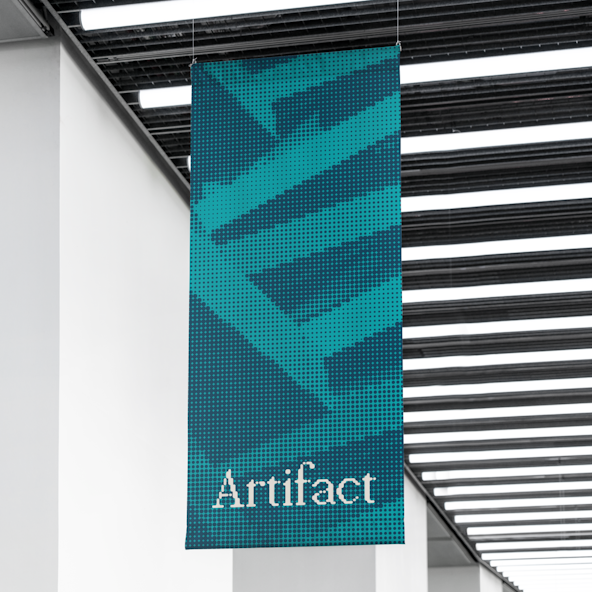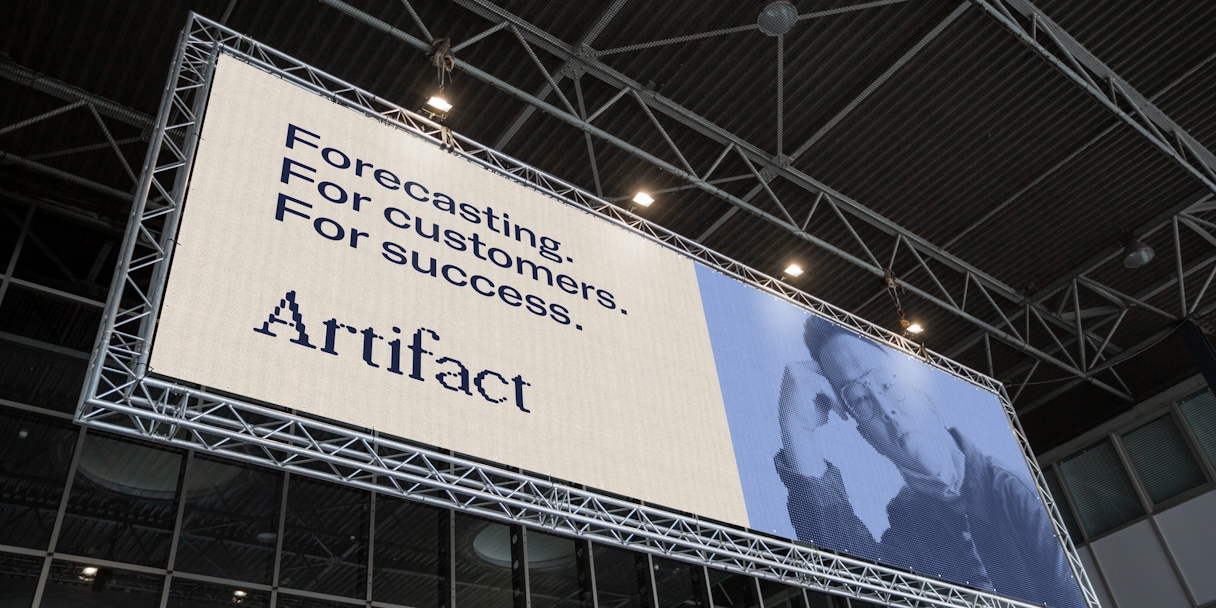For customer experience and product teams, qualitative data is where invaluable customer insights live. It’s full of trends and common pain points that can be leveraged to better understand consumers' wants and needs, and Artifact is one of the first technologies to harness the power of this data in a robust and accurate way.
As the first of its kind, Artifact needed to communicate not only what its company does, but how it does it better than anyone else. Within brand strategy, we identified the common audience need as the ability to proactively identify customer needs and take quick action to address them. Before Artifact such a task was daunting, as qualitative data analysis was clunky and monotonous. But with Artifact’s technology, insights emerge quickly, enabling customers to truly remain at the center of the experience.
From a strategic perspective, there was a compelling opportunity to rally around Artifact's would-be users, celebrating them for the success they'd already achieved and positioning Artifact as the key to unlocking new levels of growth and customer loyalty. Together, Focus Lab and Artifact crafted a brand positioning strategy that defined the brand as attentive (to customers' needs), attuned (to what matters most), and ahead (of would-be challenges and issues) — and in turn, able to extend those benefits to its users.
Complementing positioning, Focus Lab refined three brand attributes — Savvy, Relevant, and Perceptive — that worked collectively to characterize Artifact as an innovative brand on the cutting edge of AI technology, yet empathetic to every customer's experience.
For customer experience and product teams, qualitative data is where invaluable customer insights live. It’s full of trends and common pain points that can be leveraged to better understand consumers' wants and needs, and Artifact is one of the first technologies to harness the power of this data in a robust and accurate way.
As the first of its kind, Artifact needed to communicate not only what its company does, but how it does it better than anyone else. Within brand strategy, we identified the common audience need as the ability to proactively identify customer needs and take quick action to address them. Before Artifact such a task was daunting, as qualitative data analysis was clunky and monotonous. But with Artifact’s technology, insights emerge quickly, enabling customers to truly remain at the center of the experience.
From a strategic perspective, there was a compelling opportunity to rally around Artifact's would-be users, celebrating them for the success they'd already achieved and positioning Artifact as the key to unlocking new levels of growth and customer loyalty. Together, Focus Lab and Artifact crafted a brand positioning strategy that defined the brand as attentive (to customers' needs), attuned (to what matters most), and ahead (of would-be challenges and issues) — and in turn, able to extend those benefits to its users.
Complementing positioning, Focus Lab refined three brand attributes — Savvy, Relevant, and Perceptive — that worked collectively to characterize Artifact as an innovative brand on the cutting edge of AI technology, yet empathetic to every customer's experience.

